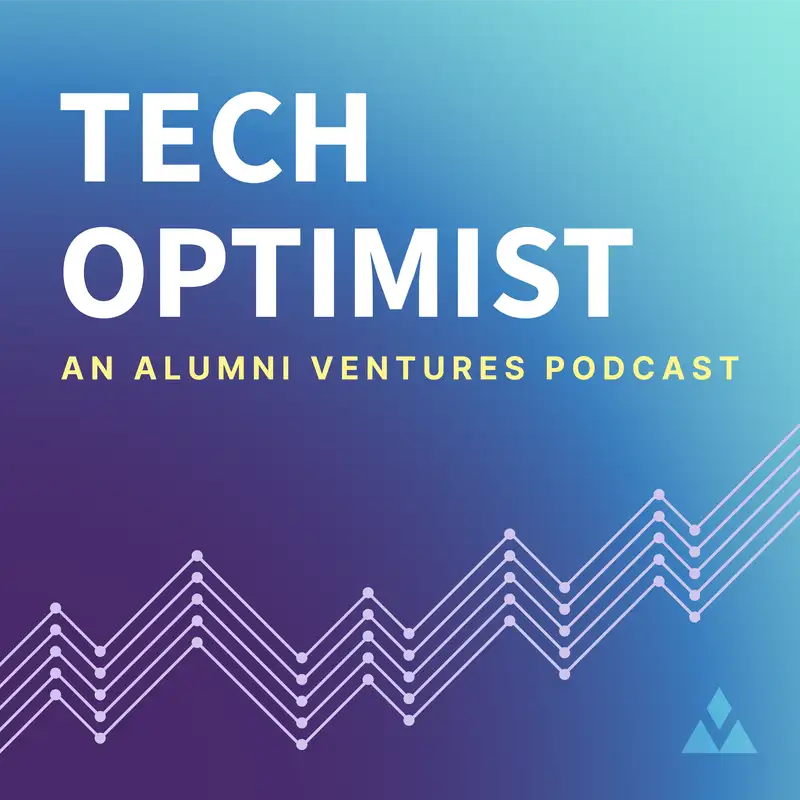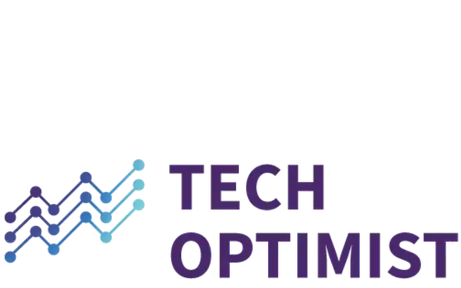#31 - Three Breakthroughs: Why Are SMRs (Small Modular Reactors) a Thing?
Sam:
Biology and batteries, small nuclear reactors, and the next level of AI. My name is Sam, your guide, and welcome back to the show.
Matt Caspari:
Read through some of the work, what caught my eye is that they actually took a lot of inspiration from biology.
Mike Collins:
Some of the things going on in trying to make the equivalent of a gigafactory. It's a big deal. There's some really promising stuff. We're investors in some. We want to be investors in others
Sam:
In a world captivated by criticism, it's easy to overlook the groundbreaking technologies shaping our future. Let's a light on innovators who are propelling us forward.
As the most active venture capital firm in the US, we have an exceptional view of tech's real world impact. Join us as we explore, celebrate, and contribute to the stories of those creating tomorrow. Welcome to the Tech Optimist.
As a reminder, the Tech Optimist podcast is for the informational purposes only. It is not personalized advice and it's not an offer to buy or sell securities. For additional important details, please see the text description accompanying this episode.
Mike Collins:
Hi, welcome to Alumni Ventures and our Tech Optimist podcast. On the show, three breakthroughs. We look at some of the most interesting new developments in the area of innovation, technology and science, particularly with an eye of areas that we're interested in investing in understanding better, think have huge potential.
I'm Mike Collins, the founder and CEO of Alumni Ventures, and I'm joined by Matt Caspari, who's one of our managing partners in our Menlo office.
Hello, Matt.
Matt Caspari:
Hey, Mike. Good to see you.
Mike Collins:
Okay, you're kicking it off today. What do you got?
Matt Caspari:
Yeah, so I've got a development in battery technology, specifically batteries that are designed for electric air travel. The development and the breakthroughs are actually inspired biology, which I thought was interesting.
The study came out recently in this scientific journal called Jewel. The research team behind it, scientists at UC Berkeley University in Michigan, also working with some industry partners, they designed this new electric aircraft battery. They demonstrated a four-fold increase when compared to conventional batteries and the number of cycles over which you can maintain this critical power to energy ratio that's needed for electric air flight.
Mike Collins:
Which is the key, right? I mean, it's power per weight per... There's three or four numbers that are just like, why no flying cars? That's the problem, right?
Matt Caspari:
Exactly, exactly. It was cool looking at the people involved. One of the lead researchers from UC Berkeley, he's actually a co-founder of a company that we've invested in the past called Sepion Technology. Again, we're interested in these battery breakthroughs. This is at a much earlier stage, but really cool and exciting.
As read through some of the work, what caught my eye is that they actually took a lot of inspiration from biology. So there was a quote that came out in an article that one of the lead scientists said that biologists use omics, so this is a broad term for these different fields in biology, genomics, proteomics, and they use these different techniques to study complex relationships between things like gene expression, DNA structure. These battery researchers were inspired by this, so they decided could we use a similar approach to examine the chemical signatures of the batteries' components to figure out where the problems were.
They actually figured out that conventional wisdom was that this key problem that they call power fade was happening in the anode of the battery. That turned out to be wrong. It actually is on the cathode side. Using these insights they came up with a new electrolyte, the way they're moving the electrons through the battery, and they were able to put in special salts into this electrolyte. This was the breakthrough that allowed for this significant increase and actually makes the batteries resistant to corrosion.
Exciting, and then they're actually going into actual flight testing is the next big step in 2025. Pretty cool breakthrough.
Mike Collins:
Yeah, no, that's very cool. Again, we see these cross discipline things are so important to innovation. Again, looking toward nature. Those are two underlying themes that have obviously happened in pharma and other areas.
Sam:
I'm here to provide another footnote for this first breakthrough that Matt has shared with us today.
Really quick, I'm going to break down how a battery works, right? Matt brought up some keywords like cathode and anode, and I had no idea what those meant in reference to a battery. But cathodes and anodes are essential components in a battery that work together to generate electrical energy through electrochemical reactions.
Here's a little bit on how they function, right? A cathode is the positive electrode in a battery during discharge. When you take a triple A or double A battery or even a D battery, you see that there's a plus or minus on either side of the Duracell battery or Energizer, whatever battery brand you're loyal to, right?
I personally have never known what those meant. You know how in certain things you have to put them in their correct ways. The correct charges are on the correct side within whatever electronic you're putting it in. Since the cathode is a positive electrode in the battery, it receives electrons from the external circuit and undergoes reduction, meaning it gains electrons. Typically, it's made of metallic oxides like lithium cobalt oxide or iron phosphate. During discharge, positive ions, or cations, move towards the cathode through the electrolyte. We're going to get to the electrolyte here in a second.
But so anodes, the anode is the negative electrode in a battery during discharge. It releases electrons to the external circuit and undergoes oxidization, meaning it loses electrons. Often made materials like graphite or silicone and lithium ion batteries, during discharge, it releases electrons and ions.
How they work together, right? During discharge, the anode, the negative, releases electrons to the external circuit. Those electrons flow through the connected device, providing electrical power. The electrons then enter the cathode where they participate in the reduction reaction. Simultaneously, positive ions move from the anode to the cathode through the electrolyte.
Now that we all understand in general how batteries work, the paper that Matt was talking about published by Jewel is public and is out there on the website. We'll provide a link in the show notes. But they provided some highlights and summary that you can get for free before you purchase the paper and read that for yourself. I'm going to share those.
Some highlights: mixed salt locally super concentrated electrolytes enable high power and low fade. Omics analysis reveals structure, function, and evolution of battery interfaces. Low LIF and high organofluoroethers in CEIs improved performance in Li-NMC811 cells. High capacity cells tested in realistic missions capturing vertical takeoff and landing.
A little bit on their summary as well for this. Omics is a discipline that identifies and quantifies molecular processes that contribute to the form and function of living systems. Here, we translate omics to study battery systems. By employing precision and analytical capabilities across chemical space, we delineate the structure, function, and evolution of interfaces when cycling Li-nickel manganese oxide (NMC)811 cells at high power and high voltage with mixed salt locally super-concentrated electrolytes. Despite differences in their makeup, top-performing electrolytes converged in their cathode-electrolyte interface chemistries, which were unexpectedly enriched with fluoroethers and depleted with LiF, the upregulation versus the downregulation. Moreover, these atypical CEIs more effectively suppress leakage current, cathode corrosion, and cathode fracturing, extending the battery life.
All of you scientists out there and all of you biologists that are listening, I hope you understand that a little bit better than I do. I got the general gist. But if you want to read the paper that Matt here is talking about and Matt shared, we'll have a link for it in the show notes, but figured we would share.
Let's get right back into Mike's breakthrough right after the short break. Don't go anywhere.
Pete Mathias:
Hey, everyone. Just taking a quick break so we can tell you about the US Strategic Tech Fund from Alumni Ventures AV is one of the only VC firms focused on making venture capital accessible to individual investors like you. In fact, AV is one of the most active and best performing VCs in the US, and we co-invest alongside renowned lead investors.
With AV's US Strategic Tech Fund, you'd have access to an investment portfolio focused on technologies that are critical to bolstering US national security and economic prosperity. We prioritize three key areas: homeland security, cyber AI and digital strategy, and space innovation. By investing in companies innovating in these areas, you can support early stage ventures and help encourage sustained growth and technological progress in the United States.
If you're interested in learning more, visit av.vc/funds/strategictech.
Mike Collins:
I'm going to stay on the theme of energy. I do think with all the talk now with AI and all the innovations happening in healthcare and scientific modeling and those kinds of things, at the end of the day there's such a strong correlation between a society's energy, abilities.
When has human progress really leap forward? Usually there's a big breakthrough in energy underneath it, right?
Matt Caspari:
Strong correlations to GDP.
Mike Collins:
Yes, very strong correlations to GDP. I think a lot of really smart people are viewing that as one of the next big bottlenecks and areas where there needs to be innovation and entrepreneurship and capital and bringing together all those key ingredients.
Mine today is really about really some of the advancements going on with what are called SMRs, which are small modular reactors. We have been following a few of these companies that are doing really interesting work in the space, and we just think it's super exciting. I think there's a couple of key things to keep in mind, which is this technology, which is you think of the big nuclear power plants you drive by, that is 50, 60-year-old technology. The ability now to do smaller modern designs and some of the things going on in trying to make the equivalent of a gigafactory when it comes to these SMRs, I think is a really exciting thing.
This is something Elon Musk did with battery technology. Viewing it as like, hey, if we're going to make a shitload of electronic vehicles, that's going to mean a lot of batteries. We need to create a modular system that is super flexible, that we can mass produce. I think that is the future in these kind of SMRs, where you can in a central location, make modules, ship them, bolt one on, again the size of a shipping container, put it on the back of a data center, have it powered a medium-sized city with three of these things. I think that-
Matt Caspari:
Highly scalable.
Mike Collins:
Highly scalable, highly redundant. Obviously when you put something on an assembly line, make it modular, you get huge cost benefits, safety benefits. It's this bespoke, huge, centralized 1970s approach is not where this industry is at anymore.
Matt Caspari:
If you look at the cost overruns and just the overall-
Mike Collins:
It's just crazy.
Matt Caspari:
This will be much more capital efficient for the world.
Mike Collins:
This is going to be a global race. I mean, we can talk about the international race to manufacture chips or AI. The countries, the communities that figure out how to put together SMRs and the energy that they can produce, which is orders of magnitude, not a little bit, orders of magnitude, more powerful than carbon fuels.
It's a big deal. There's some really promising stuff. We're investors in some, we want to be investors in others, but we think that this is really where the future of energy lies. It's all of the above for sure. We need them all, but SMRs definitely have a place in the mix with these small nuclear reactors.
Matt Caspari:
Yeah, super exciting.
Sam:
All right, that concludes our second breakthrough for this episode. Right for this break, we'll be right back.
Speaker 5:
Do you have a venture capital portfolio of cutting edge startups? Without one, you could be missing out on enormous value creation and a more diversified personal portfolio. Alumni Ventures, ranked a top 20 VC firm by CB Insights, is the leading VC firm for individual investors. Believe in investing in innovation.
Visit av.vc/foundation to get started.
Sam:
As everyone that is current to this podcast knows, I am not a nuclear physicist or a nuclear scientist. I looked into SMRs, or small modular reactors, that Mike brought up today. I wanted to define them a little bit and put out on the table what they actually do.
SMRs are significantly smaller than conventional nuclear power plants with a power capacity of up to 300 megawatts per unit, which is about one third of traditional reactors. They're designed to be factory assembled and transported as units to installation sites allowing for easier and more efficient construction.
I think that's the key thing here, the word modular, right? I went to design school, so we learned a lot about modular technology and modular building and engineering. It makes things a lot more personalized per customer and per person who would be using a set technology.
SMRs offer flexible power generation for a wider range of users and applications. They can be deployed as single or multi-module plants and can be combined with other energy sources, including renewables. They also incorporate some safety performance features through inherent and passive general safety features. They're cost-effective. For applications, they're suitable for electricity generation, cogeneration, non-electric applications, and can be used in remote regions and less developed infrastructure.
There's so many more positive things about these, but another one that I came across is environmental impact. SMRs can contribute to decarbonization efforts by providing low carbon electricity and potentially replacing fossil fuel fired power plants, which as people who know this podcast know that that is very important to us here at Alumni Ventures. Alumni Ventures helps sponsor a lot of companies that are within this climate crisis stage and development within their companies.
Yeah, these SMR technologies seem super, super fascinating. In recap, that was a little bit more about SMRs and now let's wrap up this episode with Matt's final breakthrough.
Mike Collins:
So what's your third?
Matt Caspari:
Yeah, my third, I guess it's somewhat related, going back to AI, which we know is going to require a lot of power, especially going forward.
Saw this article that came out in Bloomberg about OpenAI having developed an internal scale for charting the progress of its large language models. They've been very clear that their ultimate goal is to get to artificial general intelligence AGI. Now we have this report about this really roadmap of what the key steps are.
There's five levels to go from where we are today to AGI. I thought it'd be fun to run through those quickly.
Mike Collins:
Yeah, no, I saw this. I thought this was really... Yeah, yeah.
Matt Caspari:
Yeah.
For those who didn't read it, so where we're at today with the current version of ChatGPT, they call level one. It seems like, and maybe they have it internally, we're getting close to level two, which would be an AI system that is really capable of matching a PhD level human when it comes to solving problems. Maybe this will be a ChatGPT Five, so we're close to level two.
Where we go from there, level three would be this AI agent that's actually capable of handling tasks for you without you being there. It seems pretty obvious. You could program your AI with certain parameters that will go out in the world and execute those for you.
Mike Collins:
Yeah. I'm going to Las Vegas, do everything for me.
Matt Caspari:
Yeah.
Where it starts in my mind feel like a much bigger leap forward is when you get to this level four, where your AI is actually coming up with new ideas and concepts. That could be interesting, I think, as we think through startups, business ideas, new innovations, leaps forward in science and technology.
And then level five is when the AI not only can take over task for the individual but can do that for entire organizations. I think that's an interesting framework, where they take the leap from individual to organizations and just I think the concerns that raises, the opportunity.
Yeah, I thought it was a cool framework to think through.
Mike Collins:
No, I think it's an excellent framework. I think this is, for me, this is also a good analogy with self-driving vehicles, right? It's like going from it's cruise control and then it's I feel pretty comfortable on the highway, but still paying attention. Then, it's, okay, now it can handle more complicated urban environments.
We've been moving through those levels now. I guess I'd argue we're probably in the midpoint of where you can get in the back seat, say where you're going, and read the newspaper, work on your phone, right?
Matt Caspari:
[inaudible 00:22:08] in San Francisco.
Mike Collins:
But we have moved through those I think in the past five or seven years. I think the interesting thing is if we have a similar... We're at one and a half or two now in my opinion. If we're at four or five in five to seven years, the world changes a lot.
Again, I think that is a very reasonable pacing. It's actually seems to be moving faster than that. But I think these frameworks are really good for us to understand and monitor. I know in our business it impacts how we think about investing in startups today. It's like you have to be investing understanding that the world's going to be at level three or level four when this startup today is hitting its stride and figuring things out.
Yeah, really important framework. I saw that. I thought that was a great one. I think it's probably on my list actually to share. You beat me to that one, Matt.
Matt Caspari:
Good, okay. Good minds think alike.
Mike Collins:
Excellent. All right, have a good rest of your week. Thanks everybody. We'll do it again.
Matt Caspari:
Take care.
Mike Collins:
Take care.
Sam:
Thanks again for tuning into the Tech Optimist. If you enjoyed this episode, we'd really appreciate it if you'd give us a rating on whichever podcast app you're using, and remember to subscribe to keep up with each episode. The Tech Optimist welcomes any questions, comments, or segment suggestions, so please email us at info @techoptimist.vc with any of those. Be sure to visit our website at av.vc. As always, keep building.







